
What it means to be a World Heritage Site.
World Heritage is an award granted by UNESCO to certain places in the world, which have certain characteristics that make them exceptional, either culturally or naturally. They have a place here, the great natural paradises or the most important architectural remains of the cultures that have inhabited the planet. In addition to a certain economic contribution that must be used for their protection, the award provides these places with a broad showcase to the world, so that they can improve their conservation opportunities.
Today we are going to meet all those in which the Roman culture was present in one way or another. We cannot forget that Rome was a power that expanded thanks to its enormous military power, so the same expansion is full of episodes where the war was present. However, the acculturation that Rome brought to all these territories, to a greater or lesser extent, more than repaired this gloomy episode. In such a way that today a large part of Europe, North Africa or the Middle East continue to share a past that will unite them culturally forever, the Mediterranean, the true meeting point of Roman culture, must once again serve to unite us and not break up.
World Heritage in the provinces of Africa.
The Romans arrived in Africa in 146 BC. C. to defeat the last remnants of the great Carthaginian State. The conquest became progressive, especially from the 1st century AD. C during the reign of Emperor Claudius. Later, in the third century AD. C., we will see the first African, Septimius Severus, invested with purple. A period in which Africa became the true granary of Rome, which brought great economic benefits, widely reflected in the monumentalization of its cities.
Timgad. Ref:194 year 1982 (Algeria)
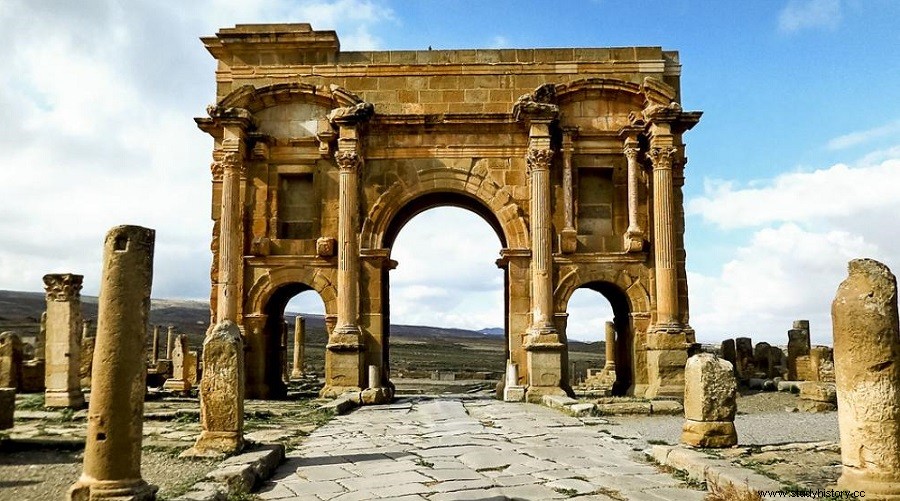
The military colony founded in the time of Emperor Trajan is one of the jewels of Roman archaeology. The city rescued from the desert sands from the 19th century is one of the best examples of a Roman city on a grid.
Tipase. Ref:193 year 1982 (Algeria)

Tipasa city founded by the Phoenicians, will become in the 1st century AD. C. at the gateway to the conquest of westernmost Africa.
Cyrene. Ref:190 year 1982 (Libya)

A place of symbiosis between the Greek and the Roman. The city was founded by the former and became one of the most important in Africa by the latter. Today it has impressive archaeological remains of both cultures as it was abandoned in the 7th century. We are left with the bust of Faustina the Minor, daughter, wife, and mother of emperors.
Leptys Magna. Ref:183 year 1982 (Libya)

Founded by the Phoenicians, annexed to Rome after the victory against the Carthaginians and embellished by the first emperors Augustus and Tiberius. But it will forever remain as the Roman city where the first African emperor, Septimius Severus, was born.
Sabratha. Ref:184 year 1982 (Libya)
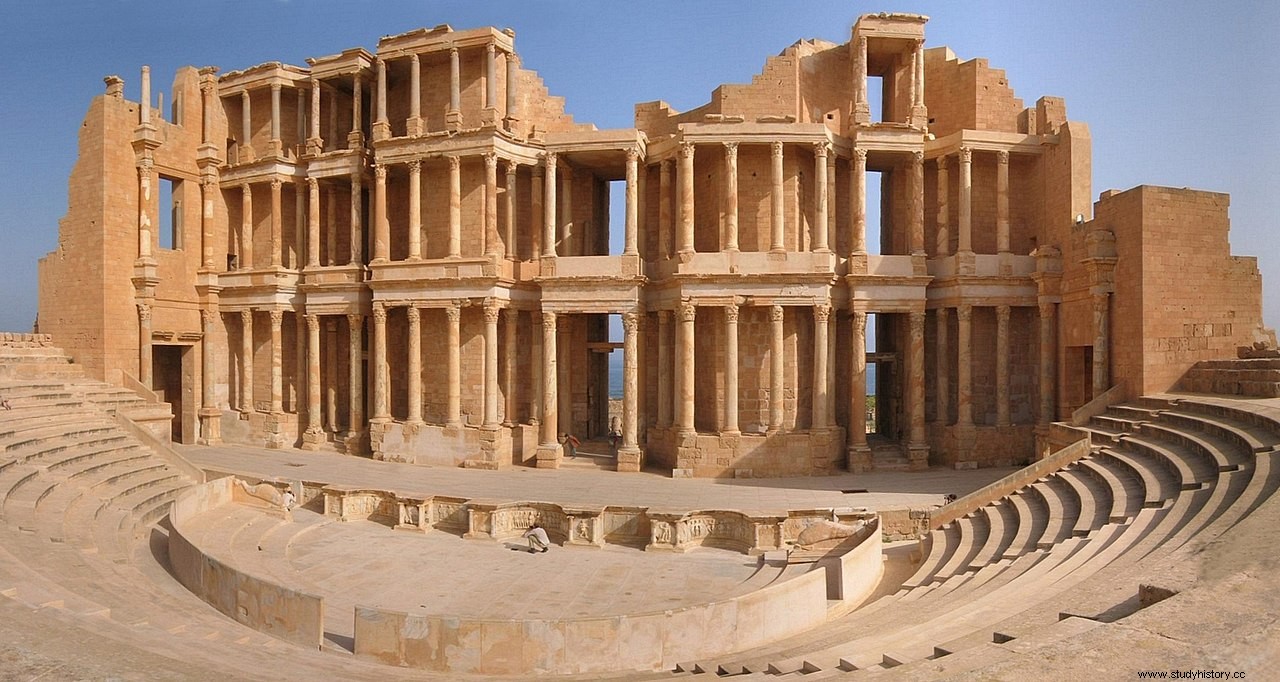
Note that, like its two previous companions, the Roman cities of Libya today are in a situation of danger due to the climate of conflict in the region. Sabratha is Phoenician by foundation and Roman since the 1st century AD, as we can see, its impressive theater.
Volubilis. Ref:836bis year 1997 (Morocco)

Founded by Carthaginians, Numidian capital and converted into one of the most militarized cities by Rome in North Africa. Today the main monuments of Roman culture are found there, we are left with the arch of Caracalla.
Amphitheater of Djem. Ref:38bis year 1979 (Tunisia)
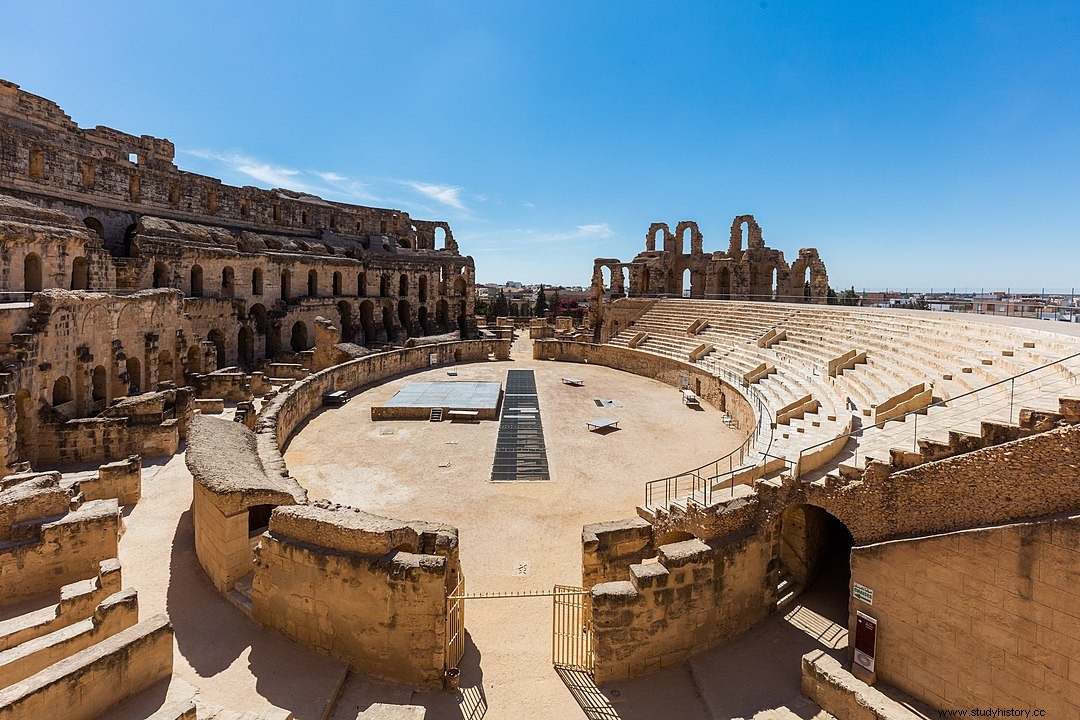
The largest amphitheater in Africa, and truly a paradigmatic place of the greatness of the Roman Empire. In a small town in the middle of the Tunisian desert, this impressive construction emerges, the result of the enormous economic power of Thysdrus , this Roman city in the third century. Its late construction in the year 238 is also a differential fact.
Carthage. Ref:37 year 1979 (Tunisia)
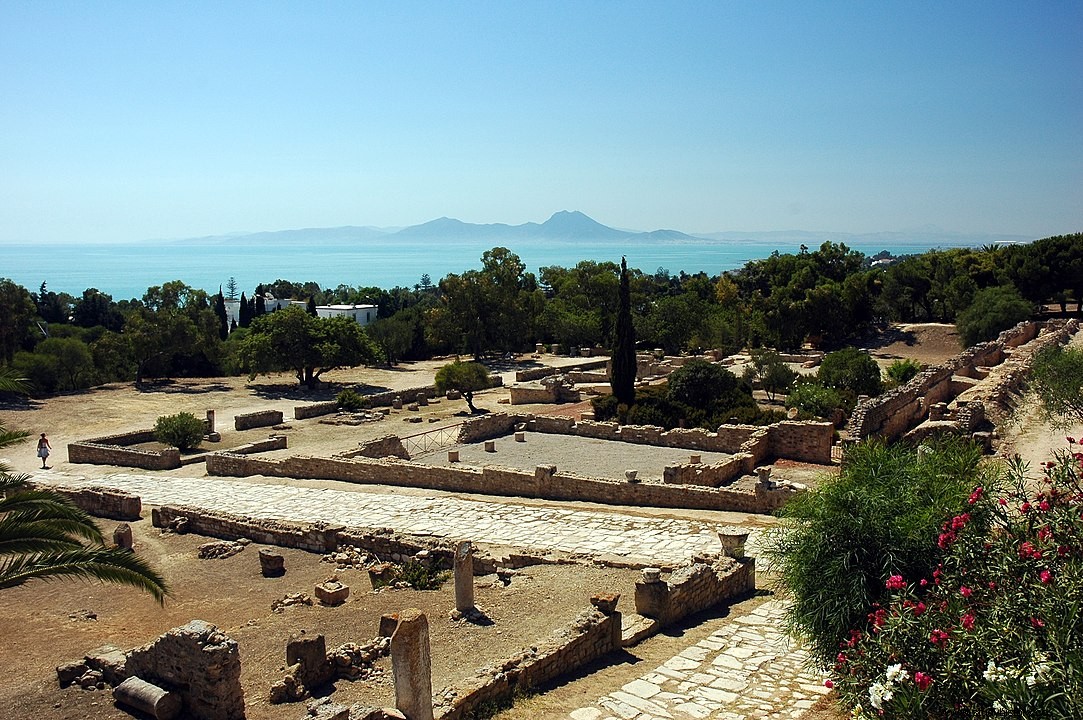
The greatest rival that the Republic of Rome knew. The city founded in the IX century a. C. and that exerted the dominion of the Mediterranean until the irruption of Rome. Hannibal one of his generals threatened the capital Rome in the 3rd century BC. C. The answer came in 146 a. C. the city was razed to the ground and Roman Carthage was built on top of it.
Dougga. Ref:794 year 1997 (Tunisia)

Site that collects traces of different cultures; Punic, Numidian, Roman and Byzantine. Surrounded by olive trees, which denote the rich past of this city as producers of oil for the Empire. Among all its monuments we echo its Roman Capitol.
World Heritage Site in Italy
The cradle of the Empire deserves a point in exclusivity, we might even think that by itself it would fill any list. It is the country in the world with the most World Heritage Sites, and obviously a large part of them has to do with Roman culture.
Rome. Ref:71 year 1980

The entire historic center of Rome is a World Heritage Site. In the city that forged an Empire, we can find theaters, amphitheaters, forums, columns, markets, palaces... In short, ROME.
Naples. Ref:726bis year 1995

The entire historic center of Naples shares this mention. There are monuments from different periods, but the catacombs of San Gennaro, built since the 3rd century, serve to remind us of the persecutions suffered by Christianity in the Empire.
Ravenna. Ref:788 year 1996
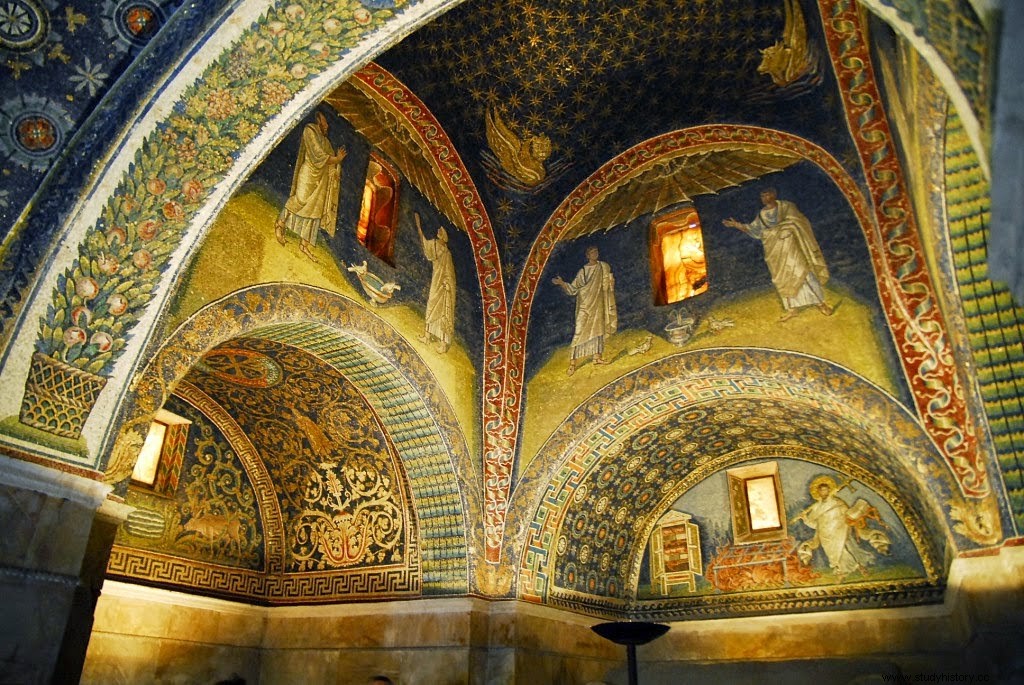
The other capital of Empire. Ravenna will be the city chosen to lead the Western Empire in the 5th century. It has the most important Paleo-Christian monuments in the world, the best example being the mausoleum of Galla Placidia, its mosaics have no possible comparison.
Roman villa of Casale. Ref:832 year 1997
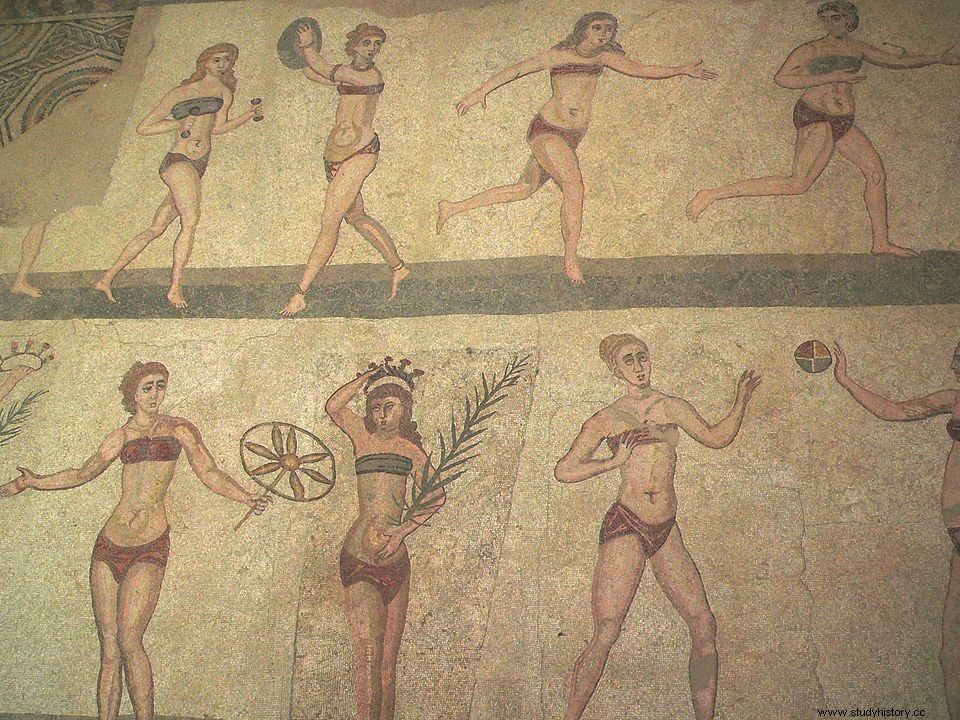
This villa is located on the island of Sicily. Built between the 3rd and 4th centuries, it is one of the best examples of late Roman villas in Italy. Its spectacular mosaics. As a curiosity, the owner is still being sought, with two emperors among the candidates, Maximiano and his son Maxentius
Pompeii. Ref:829 year 1997

Together with Herculaneum and Torre Annunziate, they were buried by the eruption of Vesuvius in the year 79 AD. C. It is the reason why they have been preserved so well, in them we find some of the most important vestiges of Roman culture.
Yarrow. Ref:825 year 1998
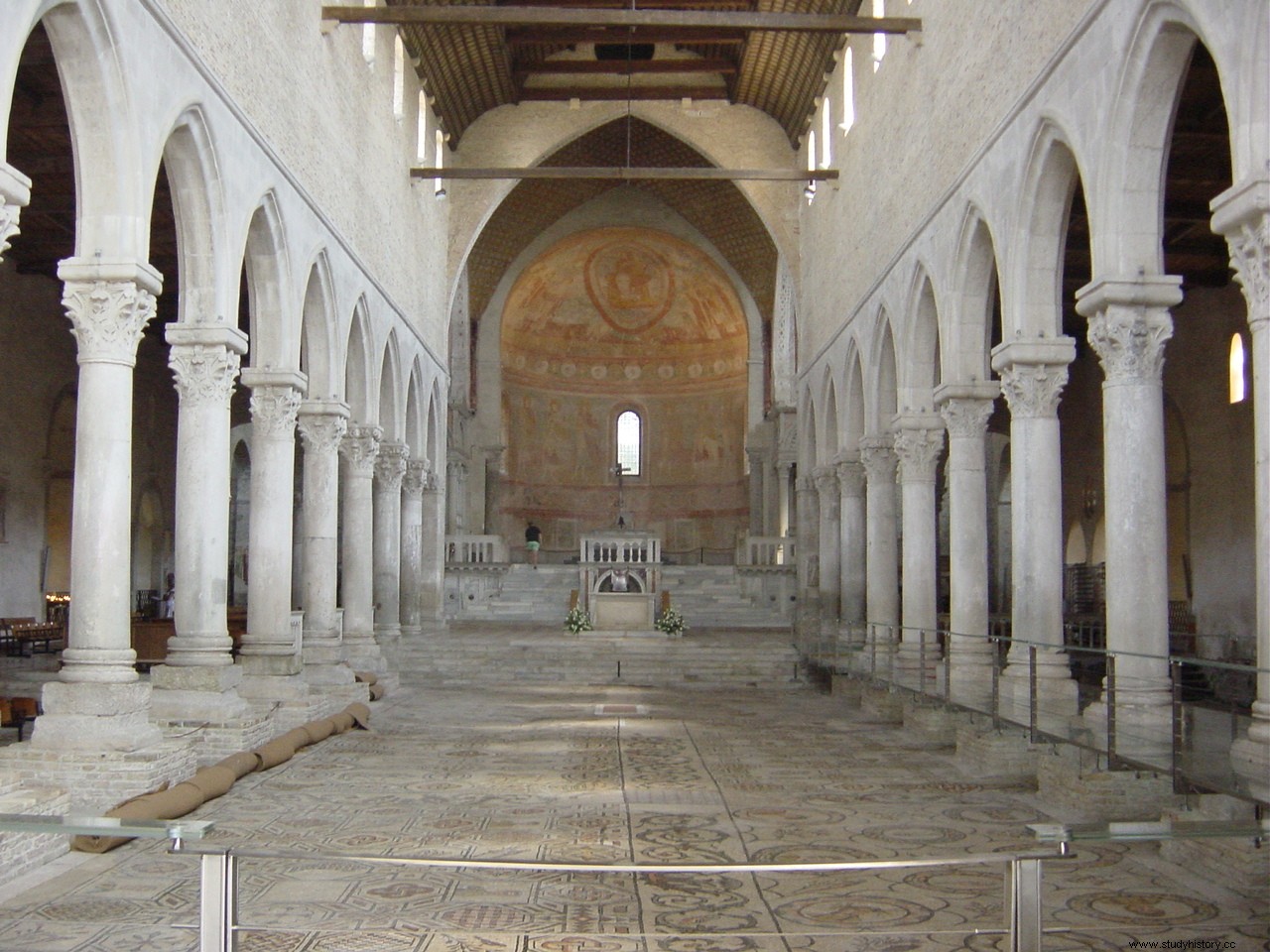
Small town located near Venice. According to some experts the largest Roman city that is still hidden. Founded in 180 a. C. His curiosity lies in the image. an 11th century patriarchal basilica built on an impressive 4th century AD Roman mosaic. C. containing scenes from the old testament.
Hadrian's Villa. Ref:907 year 1999
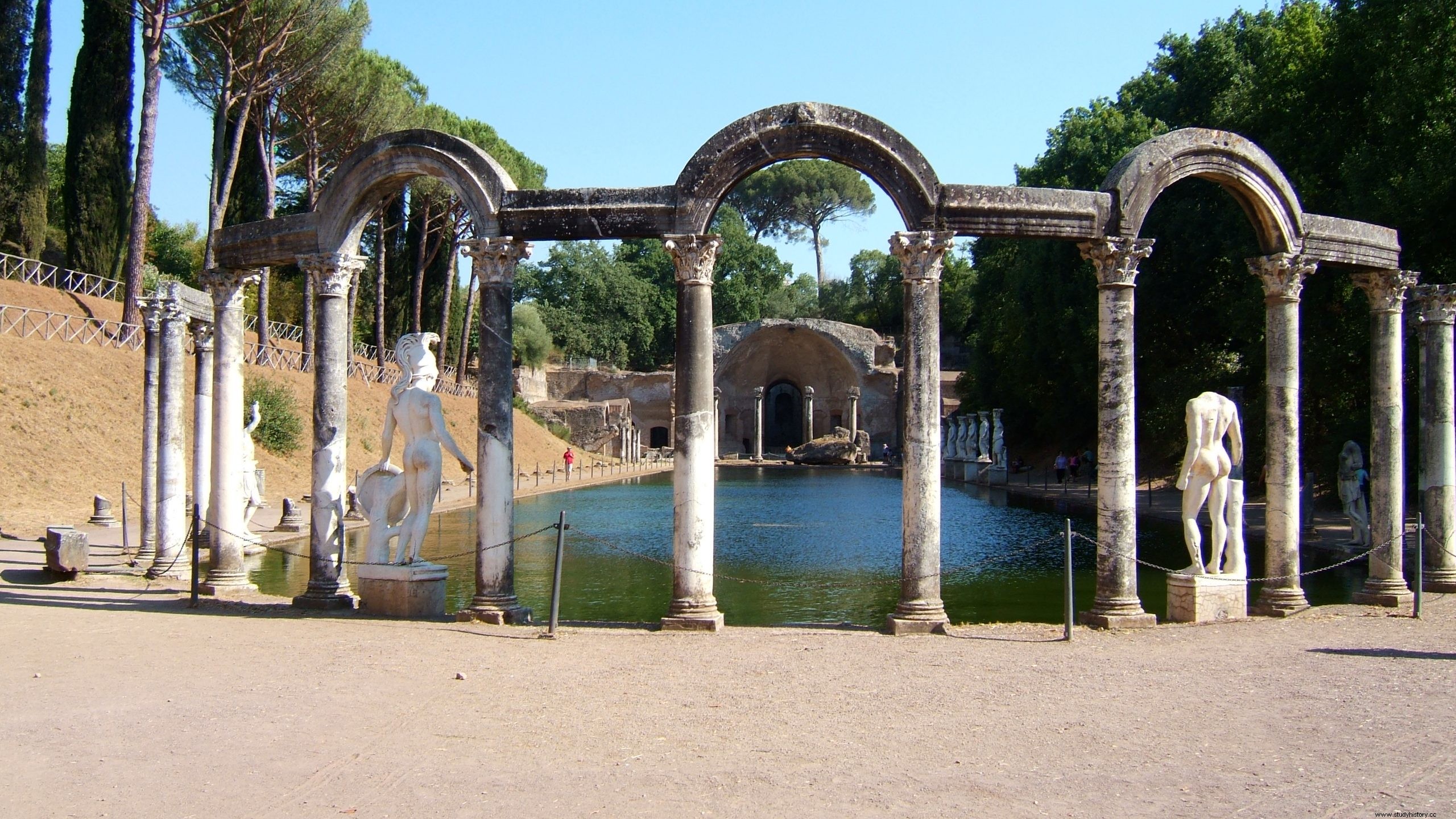
The villa of about 1 km2 was ordered to be built by Emperor Hadrian very close to Rome, as a place of rest and retirement. It is a mixture of Egyptian, Greek and Roman styles, as the Hispanic emperor liked.
Verona. Ref:797 year 2000.
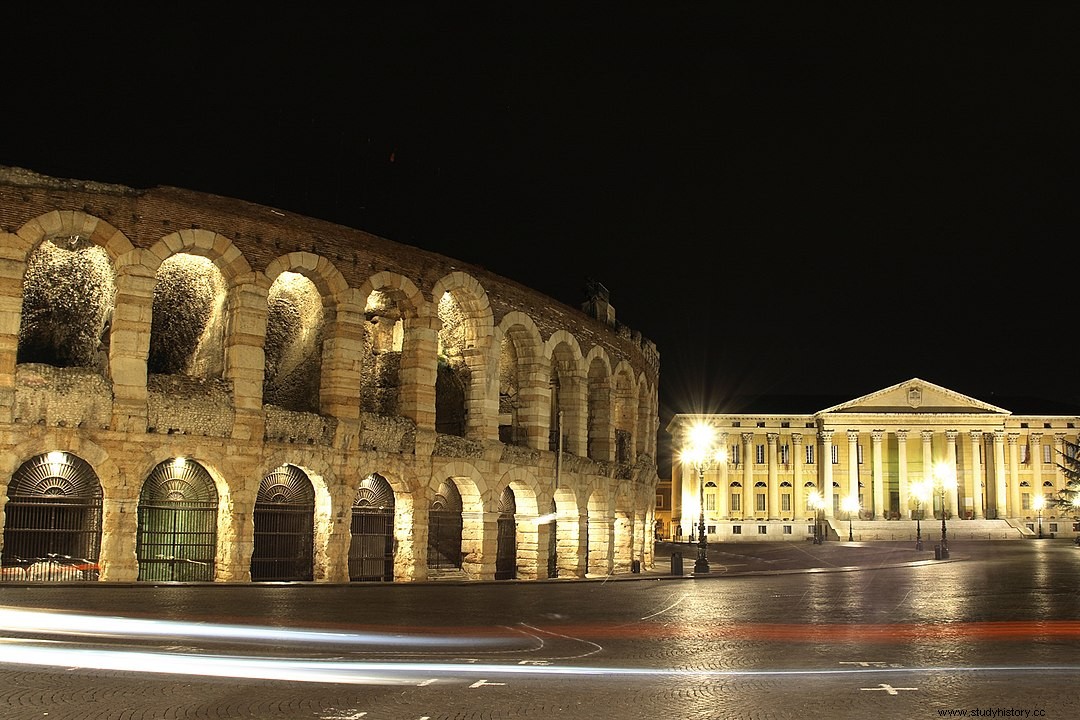
Located in northern Italy, this city is one of the most beautiful in the country. All of it holds the title of World Heritage Site. But we cannot overlook the Verona Arena, built in the year 30 AD. C., today it continues to host the best opera shows in the world.
Necropolis of Cerveteri and Tarquinia. Ref:1158 year 2004
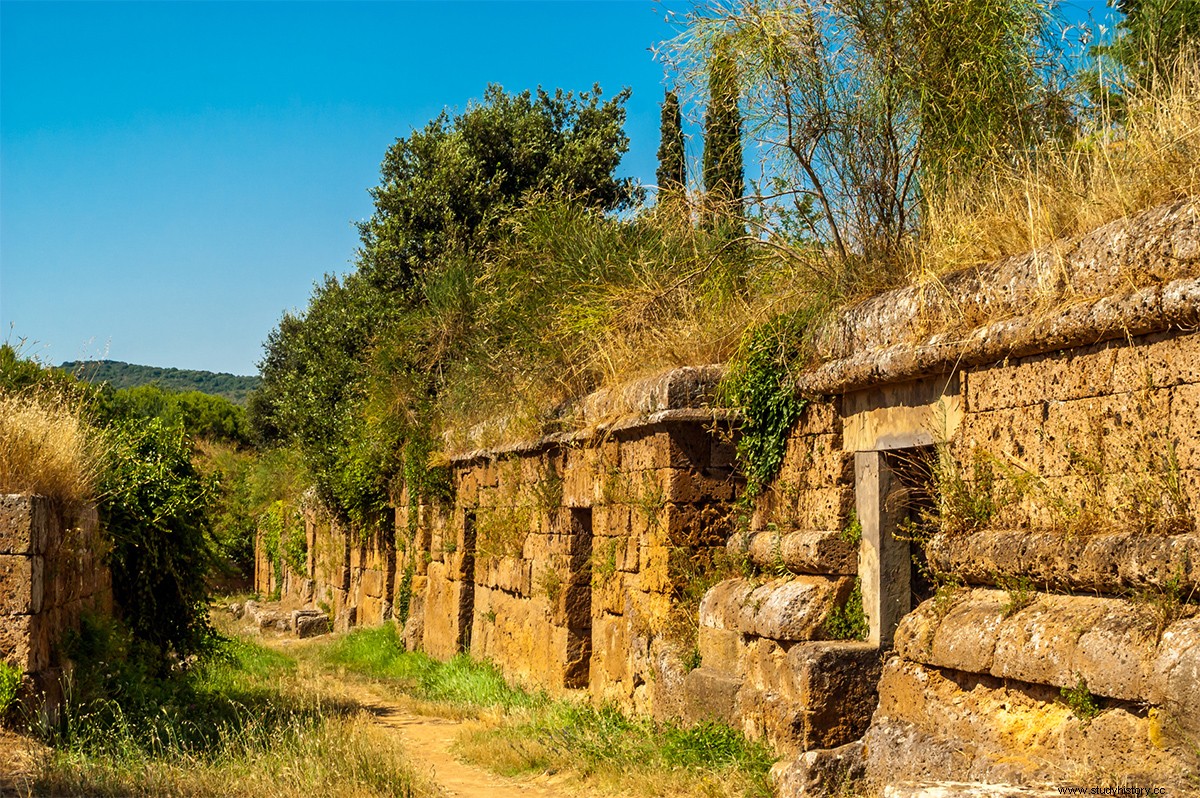
They may not fit on this list. It is true they are Etruscan, built between the IX-I century B.C. In other words, it includes the Roman period of Etruria, but also some of the first kings of Rome were Etruscans. Some contain more than 6,000 rock-cut tombs.
World Heritage Site in the Western Provinces.
Gaul, Hispania, Britannia or southern Germania are the territories that Rome conquered over a long period of time. We can count up to three centuries of disputes over the Romanization of the areas that remained to the west of Rome. Today we can assimilate without embarrassment that in these territories we are still partly Roman, our culture, our way of life, and in some even our language is still Roman.
Trier. Ref:367 year 1986 (Germany)
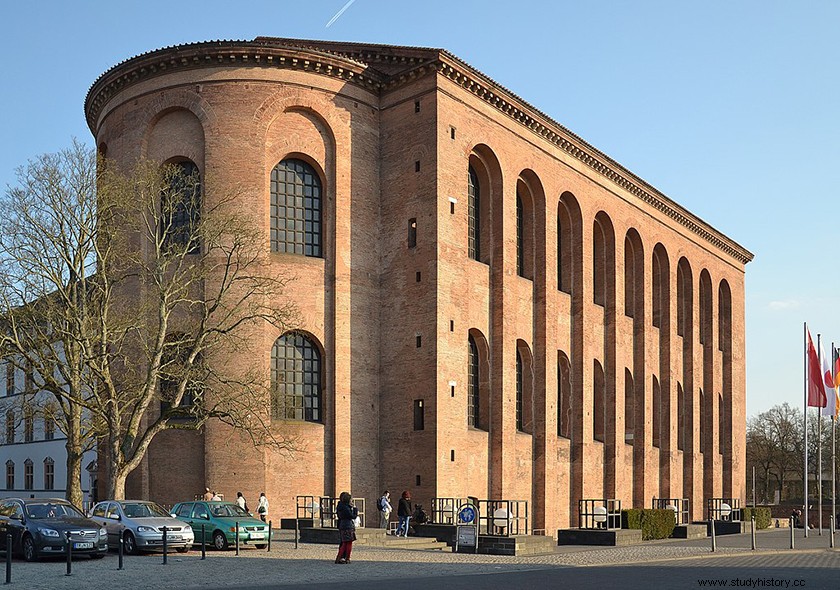
Trier was a Roman colony from the 1st century. It became one of the capitals of the Tretarchy at the end of the 3rd century. Its most emblematic monument is the Porta Nigra. But this reconstructed Palatine Hall of Constantine is wonderful.
Frontiers of the Roman Empire. Ref:430 year 1987. (several countries)

5,000 km from the United Kingdom to the Black Sea served to defend against the barbarian peoples after the Roman conquests. Take as an example the gate of the Roman fort of Saalburg (Germany)
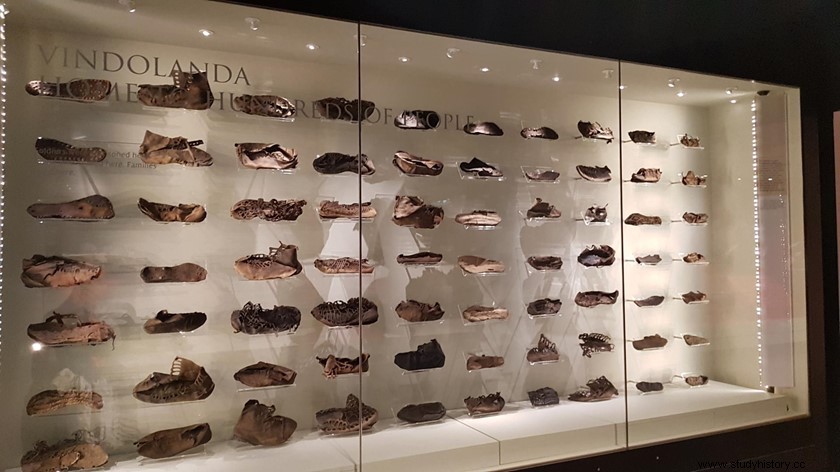
These 5,000 km of extension well deserve two images. In this case, the Vindolanda museum, attached to Hadrian's Wall in the United Kingdom. Undoubtedly one of the museums in the world, where we can find more objects of daily life in Rome.
Segovia. Ref:311bis year 1985 (Spain)
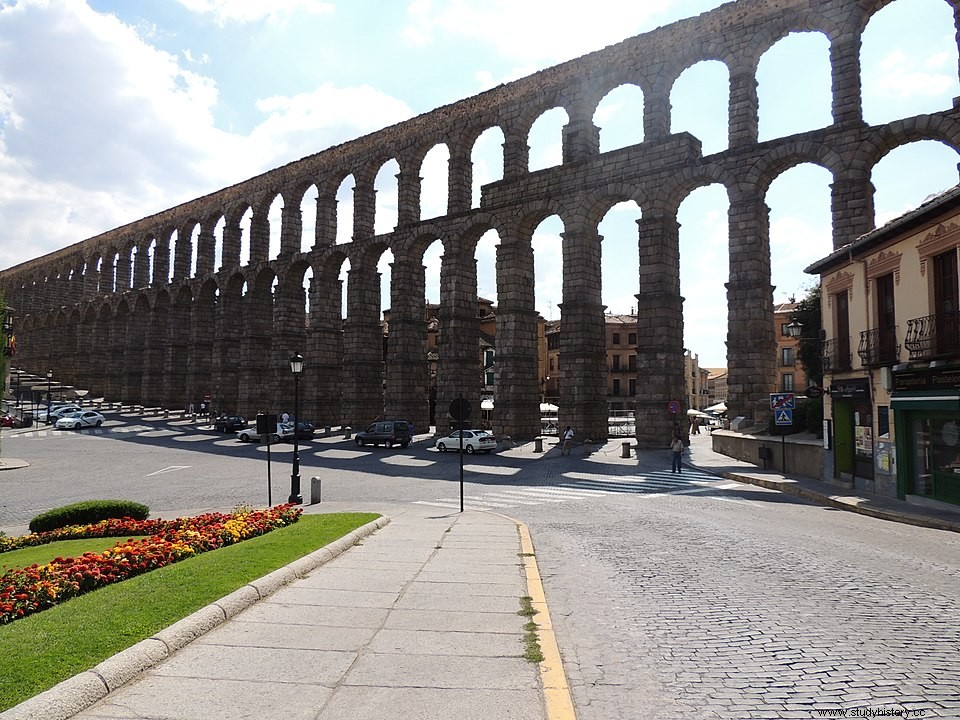
Title shared with the medieval legacy of the city. One of the best preserved Roman aqueducts in the world. Erected in the time of Trajan or Hadrian, no matter when it was, its 167 arches are a memorable memory of Roman engineers.
Merida. Ref:664 year 1993 (Spain)

The city founded by Augustus in the year 25 a. C. to become one of the most important in the Peninsula for centuries. There the Romans left us aqueducts, mosaics, and this magnificent Roman theater.
The Medullas. Ref:803 year 1997 (Spain)

A spectacular natural landscape sculpted by the Romans, for the extraction of gold from this area of the north of the peninsula since the 1st century AD. C. Ruts, landslides, rest of machinery or roads. As a curiosity, Pliny the Elder was its administrator
Tarragona. Ref:875 year 2000
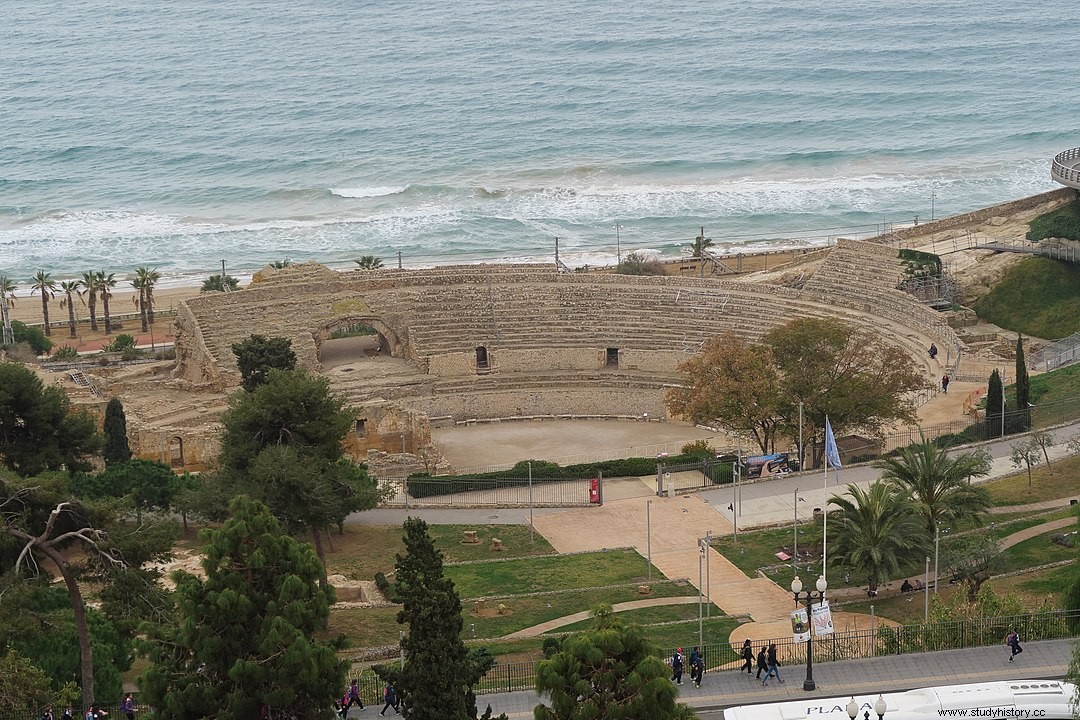
Tarraco, the Roman city founded by the Scipios to expel the Carthaginians and conquer the Iberian Peninsula. The archaeological complex extends from the city to the Arco de Bará and of course includes its amphitheater facing the Mare Nostrum.
Lugo. Ref:987 year 2000 (Spain)
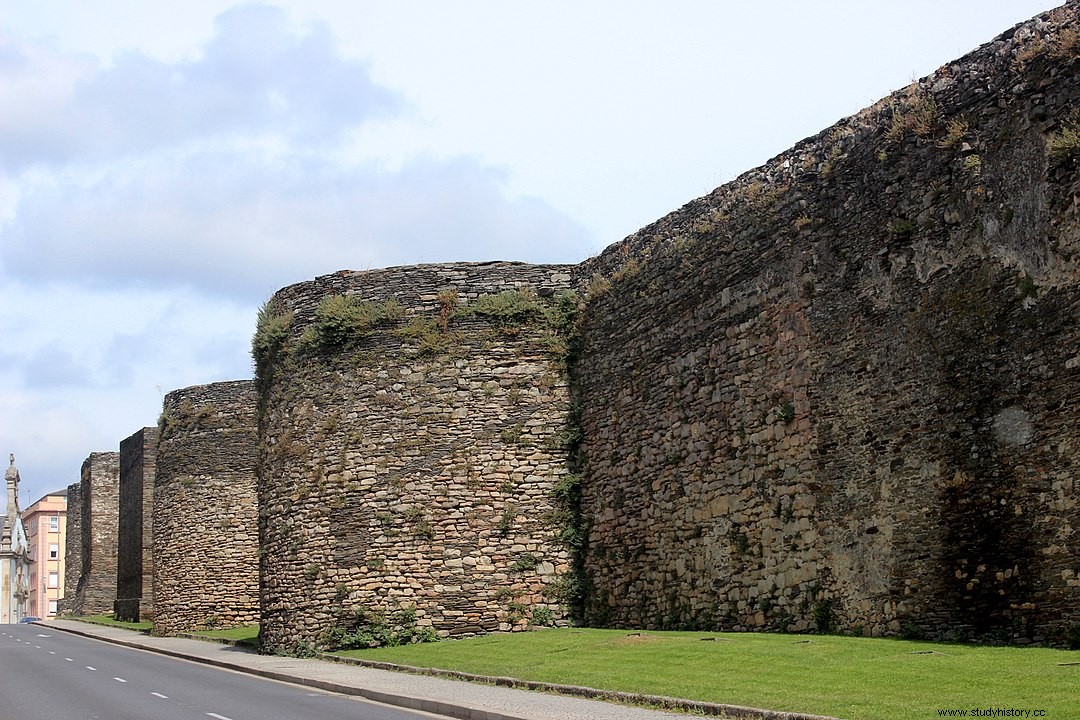
The Roman wall of this Galician city is the best preserved in the entire West. Built from the 3rd century to protect the inhabitants of Lucus Augusti; 2,266 m 85 towers and 10 gates (only 5 of them from Roman times)
Tower of Hercules. Ref:1312 year 2009 (Spain)

Located on the outskirts of La Coruña, it is considered the oldest lighthouse in the world. Its origin is Roman, as evidenced by its inscriptions on the base. Remodeled and decorated in times of Carlos III. Its 55 m height are impressive.
Arles. Ref:164 year 1981(France)

In Arles, the medieval Roman and Romanesque monuments share the leading role. The city of Gaul experienced its golden age in the fourth century at the hands of Constantine. Today, in addition to the amphitheater, the theater, cryptoporticoes and some thermal baths are preserved.
Orange. Ref:163bis year 1981(France)

The Arausio Roman was founded by Julius Caesar for his veterans of the Gallic Wars. Its Roman theatre, which shares the spotlight with the Triumphal Arch, is one of the best preserved in the world, its backdrop remains as it was 2000 years ago.
Gard Bridge. Ref:344bis year 1985 (France)

The bridge in question is a 275 m section of the aqueduct that carried water to Nemausus (Nimes). Built in the time of Augustus, it crosses the Gard river and its engineers made a true work of art.
Lion. Ref:872 year 1998 (France)

The remains of Lugdunum that lie beneath present-day Lyon are typical of ancient Roman cities. With the exception of this small Odeon, its location next to the theater is unique and unusual. The odeons were small theaters where music was heard or poetry was recited.
Evora. Ref:361 year 1986 (Portugal)

The entire historic center of the city is a World Heritage Site. But in its center this Roman temple shines as a symbol of the Romanization of the Portuguese country.
Bath Ref:428 year 1987 (United Kingdom)

A place where hot springs have been known since before the arrival of Rome. Obviously these could not be wasted by the Romans. The Baths of Bath are one of the most visited monuments in the United Kingdom. The current ones were rebuilt in the 19th century, on foundations from Roman times.
World Heritage Site in the Eastern Provinces.
At this point we find ourselves with the usual dilemma, and once again the undersigned has the same opinion. The Eastern or Byzantine Empire is not the Roman Empire, they are its heirs in the easternmost part of it. It is true that they kept much of their cultural essence, definitively incorporating Christianity and a broad symbiosis with Greek culture. But from my humble point of view, they were missing the main gene of Roman culture. The expansive capacity of the Roman Empire was born from the very essence that founded this culture in the 8th century BC, among the seven hills of Rome. It is the great difference with the Byzantines, since these, with few exceptions, preferred the defense of their territory, to a possible expansion. All this to point out the reason for the non-existence of Byzantine treasures in this article.
Another remarkable aspect of the conquest of the eastern provinces by Rome, from the third century BC. C., is respect for Greek culture. From that moment, and even before, Rome and Greece walked hand in hand culturally, the best example being the ancient Greek cities, where most of the buildings are respected.
Butrint. Ref:570 year 1992 (Albania)
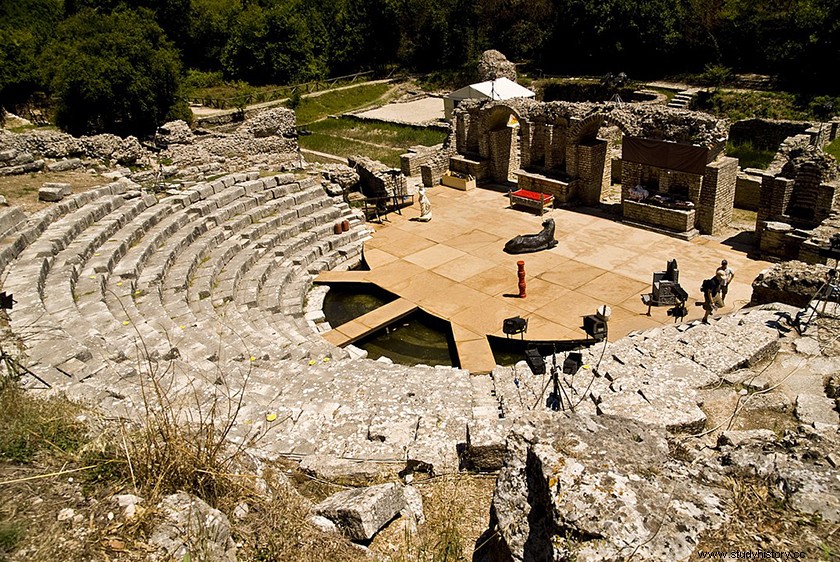
The place was inhabited since prehistory. The Romans conquered it from the Greeks in 167 BC. C. and was abandoned when it became a swampy area during the Middle Ages. Its Roman theater, a small wonder.
Paphos. Ref:90 year 1980 (Cyprus)

The Cypriot city is a marvel of history. From a pre-Hellenic place of worship, it has seen the Mycenaeans, Phoenicians and Greeks, and of course, Romans who left some of the best preserved mosaics in the world.
Split. Ref:97 year 1979 (Croatia)

The statement extends to the entire historic core, but the most spectacular building in the city are the remains of the former palace of Emperor Diocletian, scattered throughout much of it, and erected between the 3rd and 4th centuries AD. C.
Thessaloniki. Ref:456 year 1988 (Greece)
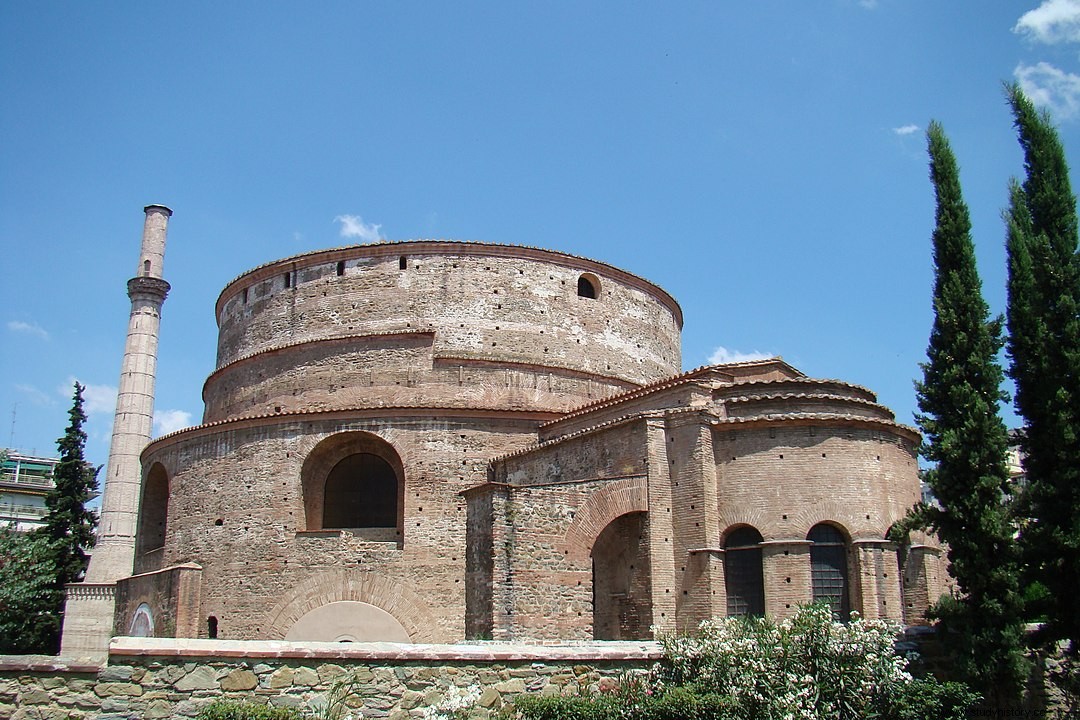
Surrounded by early Christian and Byzantine monuments, the Rotunda of Galerius appears in this Greek city. The tetrarch emperor who in 306 had his palace in Thessalonica, and who had this building built as a pagan temple. Its conservation is thanks to having been converted into a Christian church to this day.
Philippi. Ref:1517 year 2016 (Greece)
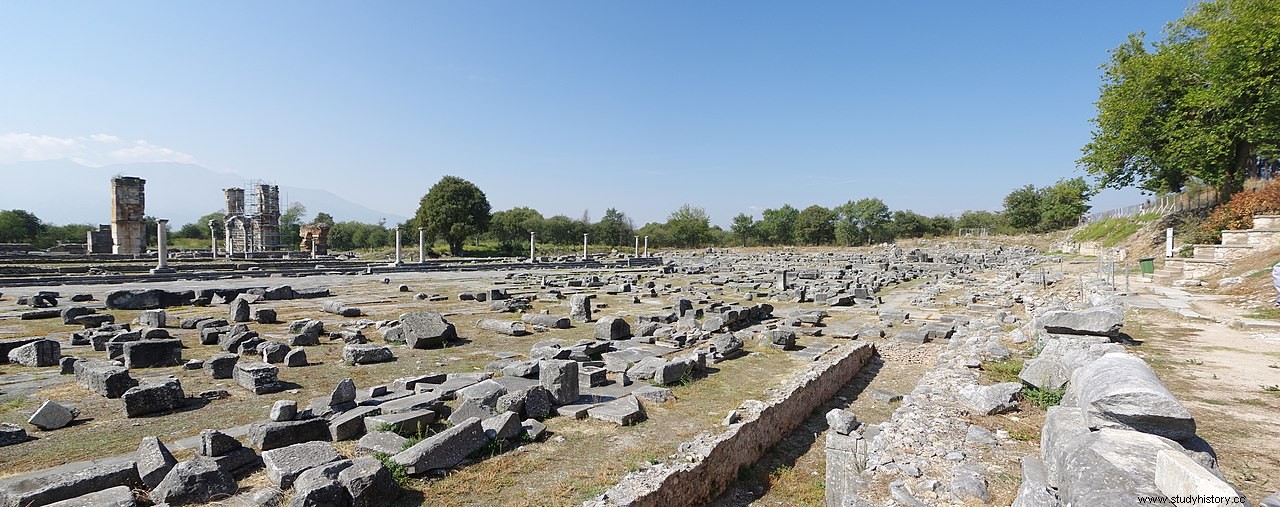
The city founded by Philip II, father of Alexander the Great, witnessed one of the busiest Roman roads in history, Via Egnatia, which connected Rome with Constantinople, due to which the Romans remodeled the most important parts of it, such as its forum.
Fish. Ref:853 year 2000 (Hungary)

In the ancient Roman city of Sopianae, we will find these Paleo-Christian necropolises, made in the 4th century AD. C., at which time the city was the capital of the Pannonia Valeria province. Its wall paintings are only matched in Rome.
Felix Romuliana. Ref:1253 year 2007

The place is located very close to the Serbian city of Gamzigrab. After many studies in the mid-20th century, it was concluded that the site was the Palace built by Emperor Galerius in the 4th century AD. C., very close to his birthplace. A place that also saw the birth of two other emperors, Maximino and Licinio.
World Heritage Site in the Provinces of the Middle East.
Crossing the Bosphorus was the great adventure of Roman culture. The conquest of the Middle East was plagued by mythical battles, Marcus Licinius Crassus is still looking for his Lost Legion, but for the Romans the Asian continent provided the opportunity to expand their borders as much as possible. The campaigns of the Hispanic emperor Trajan have gone down in history thanks to having been the one who went the furthest. There the Empire met its most important rival, the Parthians, but also there the Roman legionnaires walked through the remains of the oldest cultures in the world.
Rome left its cultural imprint on the entire Mediterranean strip and in Anatolia, but today these places are immersed in notable civil strife that seriously endanger this cultural legacy.
Bosrah. Ref:22bis year 1980 (Syria)

This Syrian city was one of the most important on the caravan route. Northern capital of the Nabataeans, and of the Roman province of Arabia Petrea with Trajan. The place preserves remains of different cultures; Nabatean, Roman, Byzantine, but among all its Roman theater stands out, one of the best preserved in the world.
Palmyra. Ref:23bis year 1980 (Syria)
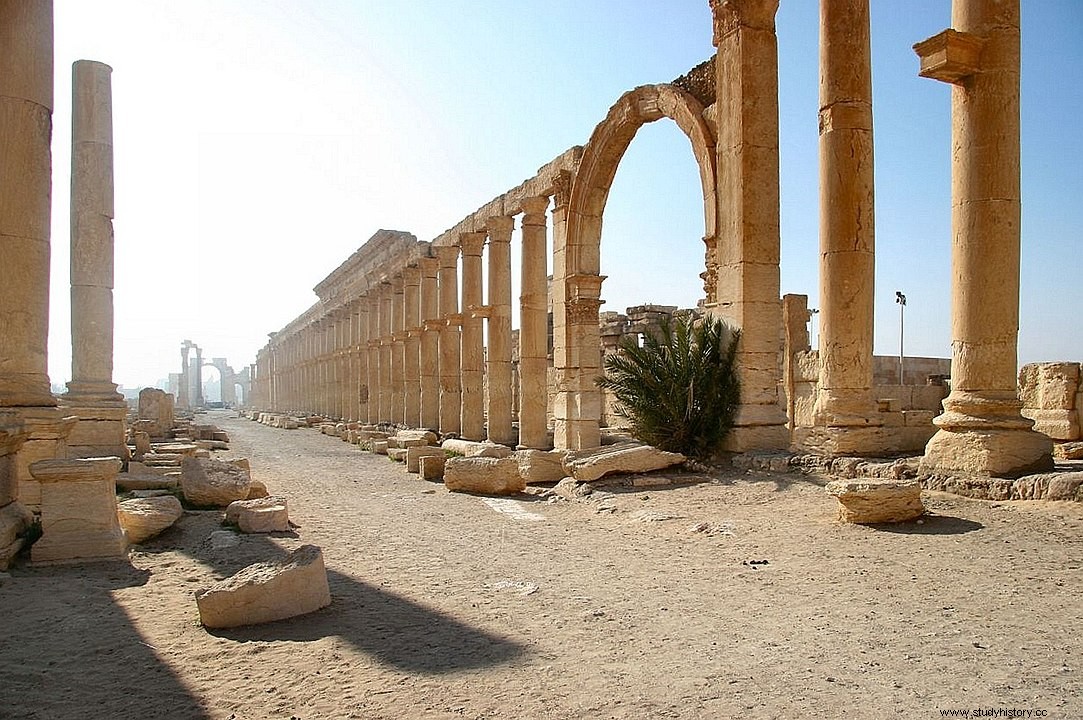
The world icon in the defense of Cultural Heritage. Today in grave danger due to the bloody civil war in Syria. One of the most prosperous cities in the East, thanks to the Silk Road. Its revolts are part of the history of Rome, after the second one it was devastated following the orders of Aurelian.
Baalbek. Ref:294 year 1984 (Lebanon)

Today a city with nearly 5000 years of history. Seat of the sanctuary of the Phoenician god Baal, it was conquered by Rome in 64 BC. C., giving the city a great romanization. The God Baal became Jupiter and one of the largest temples in the world was built. These six columns bear witness to that past.
Shoot. Ref:299 year 1984 (Lebanon)

Another thousand-year-old city upon the arrival of Rome in the 1st century BC. C. The founders of Carthage or Gadir had come from Tire several centuries before. It was completely Romanized and its main archaeological remains correspond to this period. For singular we highlight this theater with rectangular shape.
Ephesus. Ref:1018 year 2015 (Turkey)

The western coast of Turkey is full of cities like Ephesus, they share with it their Greek origin and intense Hellenization. All of them in one way or another were Romanized, but few like Ephesus. Trajan or Hadrian were immortalized in it with two monuments, but the Library of Celsus, 2nd century AD. C. is a place that must have been exceptional.
Afrosidia. Ref:1519 year 2017 (Turkey)

The city was erected by the Greeks in honor of the goddess of love. It was enlarged in times of the Empire by the Romans, as a result of its location close to large veins of white marble, which traveled from Aphrodisias to all corners of the Empire. Among his remains we are left with his odeon.
If you have had the patience to get here counting, you will have noticed that there are 46 places in the world declared World Heritage Sites. Did you imagine that there would be more or less? Would you remove or add some? Feel free to add your comments in the comments section. My personal opinion is that I would love to visit all of them, some will have to wait, but I don't lose hope.

And if you feel like the “luxury” of buying this collection, you will be collaborating with this blog
More info:
whc.unesco.org
Images:
commons.wikimedia
